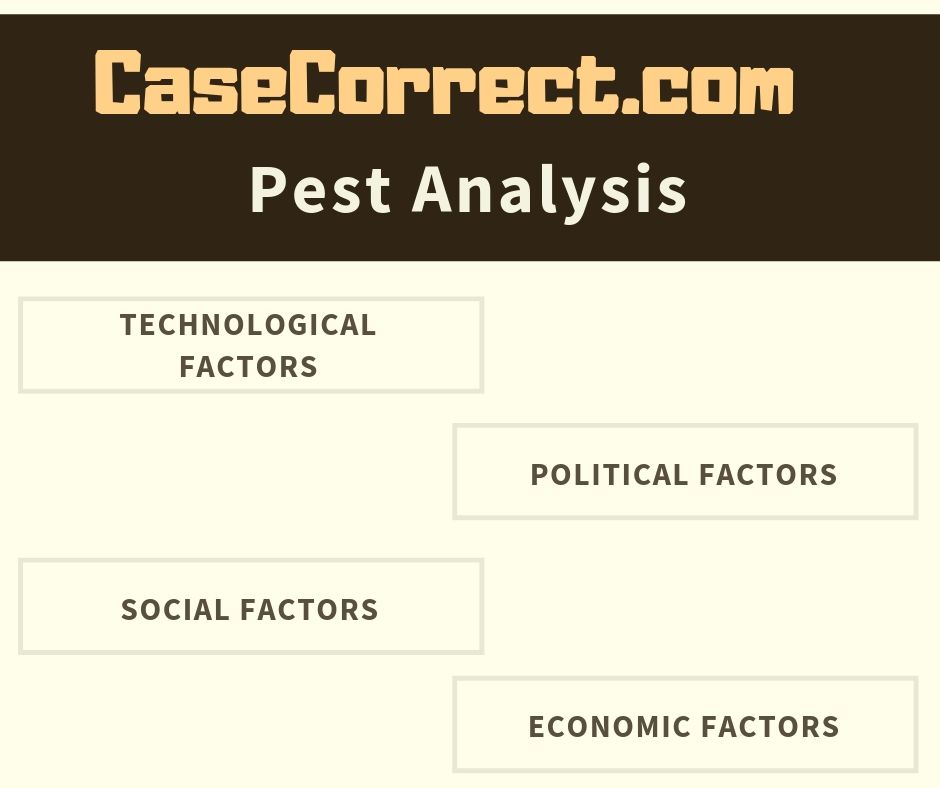Regulating Collective Investment Schemes Targeting Agricultural Commodities In India Case Analysis
Introduction
 Among the important and prominent remote website food service Regulating Collective Investment Schemes Targeting Agricultural Commodities In India Case Study Analysis specifically Regulating Collective Investment Schemes Targeting Agricultural Commodities In India Case Study Analysis is based in Oakville, Ontario. The ceo (CEO) and the chairman of the Regulating Collective Investment Schemes Targeting Agricultural Commodities In India Case Study Solution has actually contemplated to prepare the bid for the house cleaning, catering and the janitorial services of the iron ore mine specifically Gregory Mine that lies 320 kilometers north of Yukon, Canada. The Regulating Collective Investment Schemes Targeting Agricultural Commodities In India Case Study Help has actually been involved in the extremely competitive process of bidding. It is vital to note that the profits in the market has lowered by 30% in 2015, due to the fact that of the weak economy worldwide, in addition to the subsequent decline in the rates of the natural deposit product. It is considerably crucial for the CEO to resolve the financial analysis prior to going to choose whether to submit a quote.
Among the important and prominent remote website food service Regulating Collective Investment Schemes Targeting Agricultural Commodities In India Case Study Analysis specifically Regulating Collective Investment Schemes Targeting Agricultural Commodities In India Case Study Analysis is based in Oakville, Ontario. The ceo (CEO) and the chairman of the Regulating Collective Investment Schemes Targeting Agricultural Commodities In India Case Study Solution has actually contemplated to prepare the bid for the house cleaning, catering and the janitorial services of the iron ore mine specifically Gregory Mine that lies 320 kilometers north of Yukon, Canada. The Regulating Collective Investment Schemes Targeting Agricultural Commodities In India Case Study Help has actually been involved in the extremely competitive process of bidding. It is vital to note that the profits in the market has lowered by 30% in 2015, due to the fact that of the weak economy worldwide, in addition to the subsequent decline in the rates of the natural deposit product. It is considerably crucial for the CEO to resolve the financial analysis prior to going to choose whether to submit a quote.
The case is occurring in year 20166 in Ontario, china. The case is happening to assess the financials for the function of winning the quote for the Gregory Mine.
Key Decision (Problem or Opportunity) Considered by Stakeholders
The key stakeholders of the Regulating Collective Investment Schemes Targeting Agricultural Commodities In India Case Study Solution Incorporation is the chairman and CEO particularly Thomas young. The growth of the Remote Site Food Service Market is estimated to be lowered by 7% in the upcoming years. It is to inform that the stakeholders at the Regulating Collective Investment Schemes Targeting Agricultural Commodities In India Case Study Help Incorporation had to make the decision about grabbing the new market chance in which the CEO and chairman of the Regulating Collective Investment Schemes Targeting Agricultural Commodities In India would be preparing to make the bid for housekeeping, catering and janitorial services for the Gregory Mine.
 When making decision in order to handle the issue that has relating from the chance discussed above, it is known that there is a strong and strong in the competition Remote Food Service Industrywhich leads towards highly competitive process of bidding specially in closing bidding, so the CEO of the Regulating Collective Investment Schemes Targeting Agricultural Commodities In India Case Study Help had actually faced with the problem of making the financial analysis to make the bid either it might take on the marketplace competitors and will stay worthwhile in the market or not.
When making decision in order to handle the issue that has relating from the chance discussed above, it is known that there is a strong and strong in the competition Remote Food Service Industrywhich leads towards highly competitive process of bidding specially in closing bidding, so the CEO of the Regulating Collective Investment Schemes Targeting Agricultural Commodities In India Case Study Help had actually faced with the problem of making the financial analysis to make the bid either it might take on the marketplace competitors and will stay worthwhile in the market or not.
Internal Analysis
The assessment of the Regulating Collective Investment Schemes Targeting Agricultural Commodities In India Case Study Analysis's strength and weakness would be used to evaluate the competitive position of the Regulating Collective Investment Schemes Targeting Agricultural Commodities In India Case Study Solution and developing tactical planning.
Strengths
The strengths of the Regulating Collective Investment Schemes Targeting Agricultural Commodities In India Case Study Solution are gone over below;
Regulating Collective Investment Schemes Targeting Agricultural Commodities In India Case Study Help has more than 20 years of relevant competence and experience in the food industry.
 It has a strong and positive company relationship with the consumer along with clientswhich the Regulating Collective Investment Schemes Targeting Agricultural Commodities In India Case Study Help has developed by utilizing its resources
It has a strong and positive company relationship with the consumer along with clientswhich the Regulating Collective Investment Schemes Targeting Agricultural Commodities In India Case Study Help has developed by utilizing its resources
The Regulating Collective Investment Schemes Targeting Agricultural Commodities In India Case Study Help has participated in various successful mergers and joint ventures effort, which have led to increased market share, reinforced market image, increased capability and market access.
The primary client of the Regulating Collective Investment Schemes Targeting Agricultural Commodities In India Case Study Solution is mining companies that have added to the revenues of Regulating Collective Investment Schemes Targeting Agricultural Commodities In India Case Study Solution around 90%.
Weaknesses
The weak points of the Regulating Collective Investment Schemes Targeting Agricultural Commodities In India Case Study Analysis are talked about listed below;
The Regulating Collective Investment Schemes Targeting Agricultural Commodities In India Case Study Help has no backup strategy so to reveal the consistent reduction in the future growth.
The CEO and the chairman of the Regulating Collective Investment Schemes Targeting Agricultural Commodities In India Case Study Analysis has been tiring with their retirement plans, unwilling and for this reason unwilling to discover the services for Regulating Collective Investment Schemes Targeting Agricultural Commodities In India Case Study Help's lowered growth and decreased revenues returns.
 The Compass Group PLC has actually threatened the Regulating Collective Investment Schemes Targeting Agricultural Commodities In India Case Study Solution in a manner of capturing the Remote Site Food Industry market.
The Compass Group PLC has actually threatened the Regulating Collective Investment Schemes Targeting Agricultural Commodities In India Case Study Solution in a manner of capturing the Remote Site Food Industry market.
The Aramark Corporation has actually threatened the Regulating Collective Investment Schemes Targeting Agricultural Commodities In India Case Study Solution in such a way of expanding in Canadian's Remote Website Food Industry market.
The Regulating Collective Investment Schemes Targeting Agricultural Commodities In India Case Study Help has faced the fierce competition from the Sodexo SA.
Drivers in the Canadian Mining Industry as a Threat or Opportunity?
The essential drivers in the Canadian mining industry functions as a danger or opportunity are examined listed below;
A reduction in crude oil prices / barrel
Significantly, the primary export of Canada is the crude oil and throughout the year between 2014 and 2016, the rates of crude oil per barrel has actually lowered around 75.4 percent. The decline in the costs of crude oil would most likely cause reduction in the development of the Canadian crude oil industry as an entire, which would likewise lead to the decrease in development of remote site food service market as a whole.Apart from the risk, the around the world demand for the petroleum would be increasing which produces significant opportunity for the Regulating Collective Investment Schemes Targeting Agricultural Commodities In India Case Study Solution.
Decline in Precious metal prices
The main export product of Canada is precious metal and throughout the years in between 2010 and 2016, the costs of the precious metal has reduced around 18 percent. The decrease in the rare-earth element rates would more than likely result in the decrease in the development of the Canadian's rare-earth element industry, likewise result in the reduction in the growth of the remote website food service industry as a whole. Apart from the risk, the around the world need for the rare-earth element purchases would be increasing which develops considerable chance for the Regulating Collective Investment Schemes Targeting Agricultural Commodities In India Case Study Solution.
Volatility in prices and demand of Iron Ore
 The iron ore is one of the main exports in Canada and the costs of the iron ore has declined around 63 percent. Such reduction in the prices would result in the decrease in the growth of Canadian Iron ore market as a whole which produces threat for the Regulating Collective Investment Schemes Targeting Agricultural Commodities In India Case Study Help.
The iron ore is one of the main exports in Canada and the costs of the iron ore has declined around 63 percent. Such reduction in the prices would result in the decrease in the growth of Canadian Iron ore market as a whole which produces threat for the Regulating Collective Investment Schemes Targeting Agricultural Commodities In India Case Study Help.
Risk of exchange rate
Over the previous years, it is to keep in mind that the Canadian dollar has diminished versus the United States dollars roughly by 20 percent which in turn would result in the decrease in the future development of mining industry as a whole, not just this it would also result in the decline in the development of the remote website food service industry, for this reason creating hazard for the Regulating Collective Investment Schemes Targeting Agricultural Commodities In India Case Study Help.
Competitive Analysis
There are various competitors of Regulating Collective Investment Schemes Targeting Agricultural Commodities In India Case Study Analysis Services Ltd. That includes Sodexo SA, Aramark Corporation and Compass Group PLC. These competitors produces competitive risk for the Regulating Collective Investment Schemes Targeting Agricultural Commodities In India Case Study Help through strive to steal the market share of the Regulating Collective Investment Schemes Targeting Agricultural Commodities In India Case Study Solution to reinforce their grip in the market and to take full advantage of the marketplace share.
Sodexo SA
It is a multinational corporation established in 1966 based in Paris, France. Sodexo SA is specialized in serving healthcare facilities, local schools as well as restaurants. It has been running in around 870 nations. Since, the Canada remains in surroundings of France, making it easy for the Sodexo SA to catch the grocery store in Canada at any time in upcoming years. The threat or competitors strength is low.
Aramark Corporation
Aramark Corporation is among the most significant corporation in the remote site food service market established in 1959 based in Philadelphia, United States. It is taken part in offering its food and assistance services to sports, service, health care, education and correlational industries in around 21 nations. Because, Aramark Corporation is the marketplace leader in offering the professional services to its clients, there is a possibility that the Regulating Collective Investment Schemes Targeting Agricultural Commodities In India Case Study Analysis would go towards exploiting the growth resources and opportunities, for this reason developing medium level threat for Regulating Collective Investment Schemes Targeting Agricultural Commodities In India Case Study Help.
Compass Group PLC
The Compass Group PLC is a multinational corporation established in the year 1941 based in Chertsey, England. Among the subsidiary of Compass Group PLC particularly Eurest dinning services which has gotten the favorable response from the Listeria Monocytogenes in Ontario prisons, this popularity would enable the Regulating Collective Investment Schemes Targeting Agricultural Commodities In India Case Study Solution to capture the Ontario market in upcoming years, hence producing high level danger for Regulating Collective Investment Schemes Targeting Agricultural Commodities In India Case Study Solution.
Ratio Analysis for Regulating Collective Investment Schemes Targeting Agricultural Commodities In India Case Study Solution.
The ratio analysis has carried out in order to evaluate the monetary health and state of the Regulating Collective Investment Schemes Targeting Agricultural Commodities In India Case Study Solution. The exhibition shows that the Regulating Collective Investment Schemes Targeting Agricultural Commodities In India Case Study Help's overall sales growth has actually been reducing over the time period. Due to the fact that of the failure of the industry and the decreasing trends towards the Regulating Collective Investment Schemes Targeting Agricultural Commodities In India Case Study Analysis, this is.
In addition to this, it can be seen that the operating revenue margin of the Regulating Collective Investment Schemes Targeting Agricultural Commodities In India Case Study Analysis is decreasing from 21 percent to 17 percent due to the significant decline in the sales of the Regulating Collective Investment Schemes Targeting Agricultural Commodities In India Case Study Analysis. Likewise, the net earnings margin of the Regulating Collective Investment Schemes Targeting Agricultural Commodities In India Case Study Help has been increasing from 11 percent to 21 percent which states that the Regulating Collective Investment Schemes Targeting Agricultural Commodities In India Case Study Analysis has actually effectively cut the non-operating cost in the downfall of the industry.
Differential Analysis
The differential analysis is performed revealing the expense and profits related to each of business system and an operating profit from each unit. The estimations are based on 2 years and each yearly income and expense is increased by 2 in order to get the total cost and earnings for 2 years agreement. A differential analysis for all 3 business units are supplied in exhibition.
It can be seen that the operating earnings generated from the housekeeping systems is negative. The factors for the negative operating revenue is the low amount that is battery charger each day per person for the housekeeping service i.e. $75, for that reason the total project's operating profit is $1720942.
Return on Investment and Payback Period
 The financial investment for the task involves cleaning devices, consistent purchased and linens. It can be seen that the return on financial investment for the job is 457 percent and the payback duration for the job is 0.21 years.
The financial investment for the task involves cleaning devices, consistent purchased and linens. It can be seen that the return on financial investment for the job is 457 percent and the payback duration for the job is 0.21 years.
